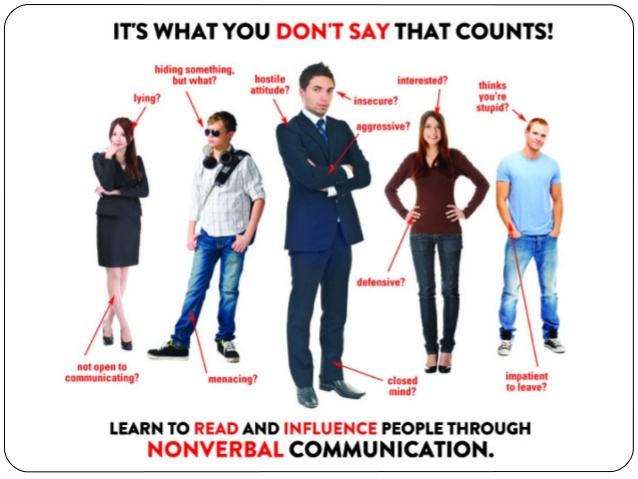



MOST people know “the look” that seems to be universal with mothers. As a child, when you were out and getting up to no good, all you needed was that long stare from your mom to stop you dead in your tracks.
You knew immediately that you would be grounded when you got back home – and no words even needed to be uttered! That was the power of nonverbal communication.
Whether you realize it or not, something similar occurs in everyday life. And by learning more about it, you will be able to create better interactions around you.
Nonverbal communication actually helps you to express yourself better.
The world was shocked when Bill Clinton’s affair with Monica Lewinsky was proven – after he had vehemently denied it! Yet, many telltale signs that he was lying were there, such as touching his nose more than three times what is normal. This is because when a person lies, blood pressure rises due to stress, which in turn causes the nerves around the nose to tingle or feel itchy.2“Micro-expressions” are minute facial expressions that are different from other facial expressions, and are almost impossible to fake.3 Understanding nonverbal communications will enable you to not only interact and communicate with others better, but also improve your ability to express yourself.
There are different types of nonverbal communication, and some can be easily forgotten.
Studies into nonverbal communication started with the publication of Charles Darwin’s The Expression of the Emotions in Man and Animals in 1872. Since then, experts have noted that a significant part of our dialogues or interactions are, in fact, not reliant on words:
1. Hand movements convey a lot of information.
A hand placed on the cheek or stroking of the chin indicates the person is in deep thought. Nail biting or fidgeting with hair suggests nervousness or insecurity.
2. Facial expressions can be interpreted differently.
This accounts for a big percentage of nonverbal communication.
Consider how many different kinds of smiles you may have seen; various smiles can translate happiness, nostalgia, annoyance, or even sadness.
A lowered head with the face looking downward could mean the person is either hiding something, or simply shy.
3. Posture can suggest a person’s attitude.
The way a person holds themselves when standing or sitting illustrates many things.
Arms crossed at the chest may indicate a sense of defensiveness. Having ankles crossed while sitting or standing would suggest nervousness.
4. Eye contact says a lot about what a person is thinking.
It is said that the eyes are the windows to the soul. There are so many things the eyes give away – even the inability to make eye contact says a lot.
People tend to look upward and to the right when they are not being honest, and they look upward to the left when they are remembering something. (This can be the opposite for people who are left-handed.)
5. Digital expressions and emojis can make text emotional.
Social media has given birth to a new form of nonverbal communication. This new wave ranges from the emoticons that people use, to the deliberate posting of status updates or photos to create a reaction.
People are able to be clear about how they feel without words by one simple click of a button to show either a smiling face or a sad face.
To interact with others better, try these small communication techniques.
To begin with, if you start by being more aware of nonverbal signs around you, it will immediately start improving your interactions.
There are also many small things you can do to communicate better without even saying a word.
Be mindful about your small gestures.
Take into account how your own body language comes across.
For instance, when you meet someone for the first time, do you smile? If so, what does your smile say? A firm handshake with eye contact and a solid smile would help you to come across more confident.
Be aware of any body language inconsistencies.
Whether on yourself or the other person, do the words match what the body says?
Consider the different meanings when you say “I’m doing great” with a big grin, or when you say it with a loud sigh. Saying it with a warm smile would indicate sincerity and that you genuinely feel “great.” If it is accompanied with a loud sigh or a sense of dejection, it would mean the opposite.
Don’t misunderstand stress with dishonesty.
How many times have you known people who read too much into texts or phone calls, simply because the person on the other end was having a stressful day, and so they came across as angry?
It is easy to misread others or be misunderstood when stressed, so be aware of this when you are having a difficult day. The next time you receive a text or email when you feel particularly stressed, perhaps it is best to delay your response until you are calmer.
Pay attention to others’ reactions.
Greater attention to nonverbal communication in others will enable you to interact with others in a more successful way.
For example, if you are with someone whose hands are clasped in front of them, it may indicate they feel vulnerable or not as comfortable. Then consider what you can do to make them feel more relaxed.
Practice these small techniques every day and every time when you’re talking with others and you’ll be a lot better at communicating with your body languages too. –lifehack.com